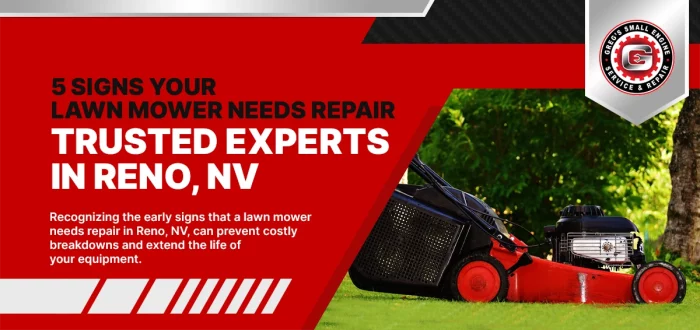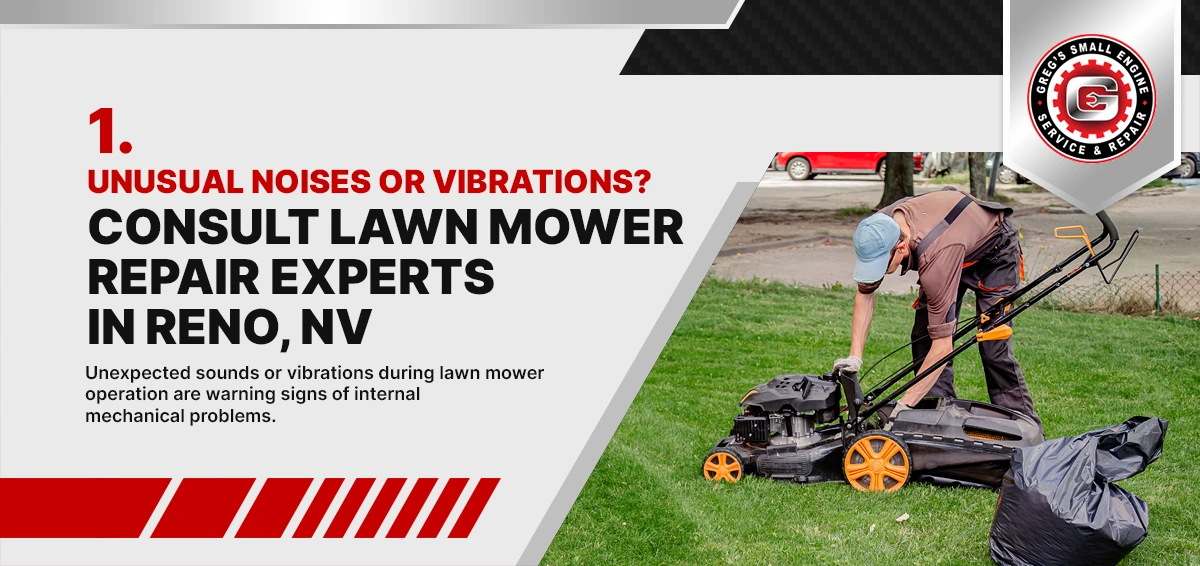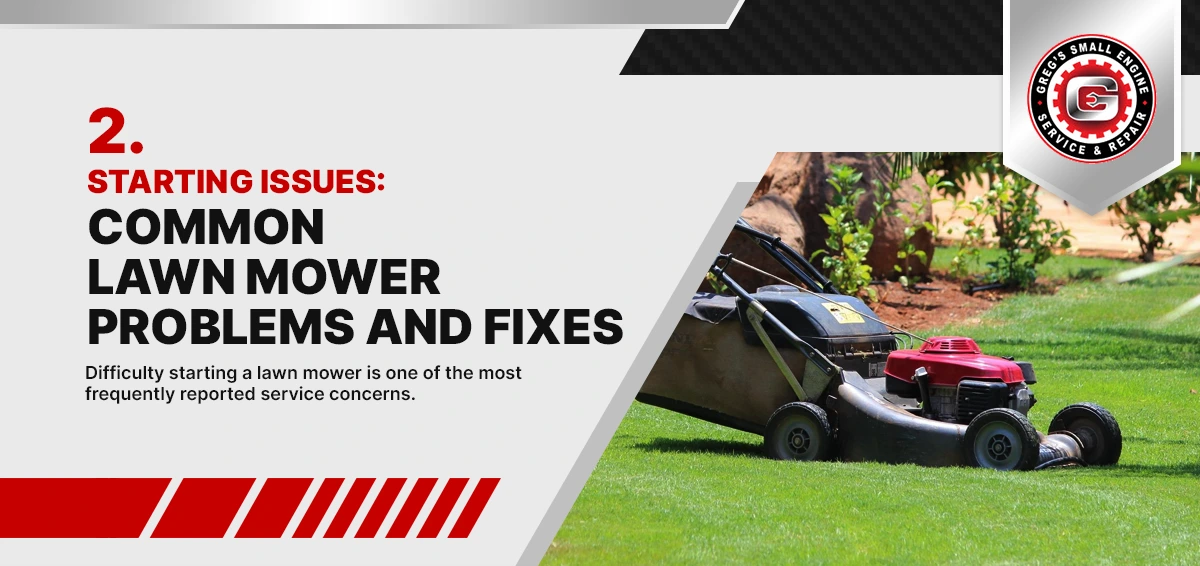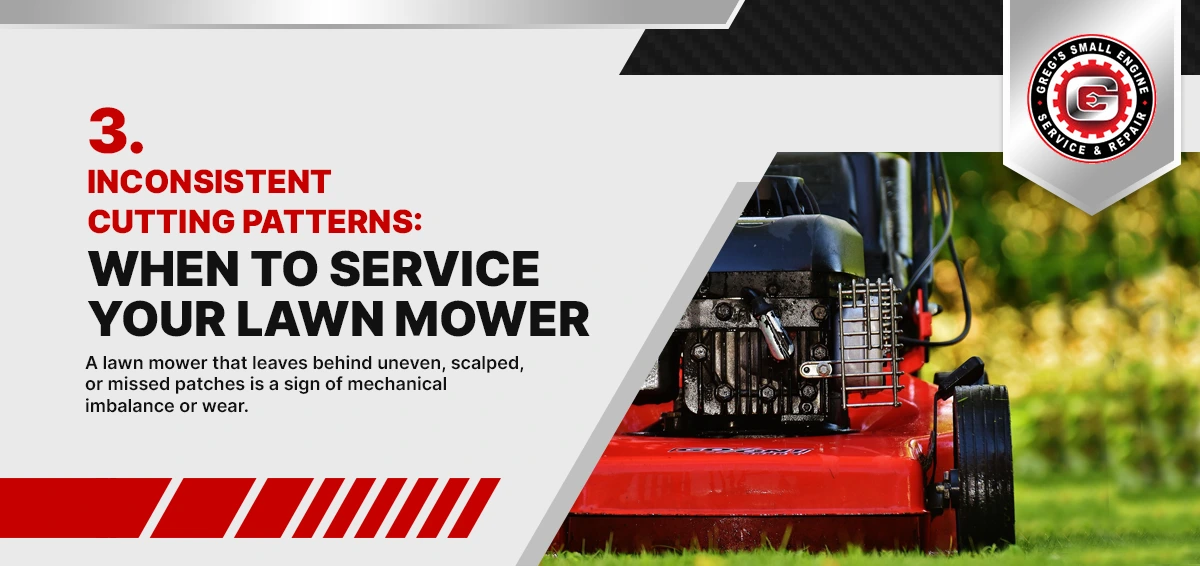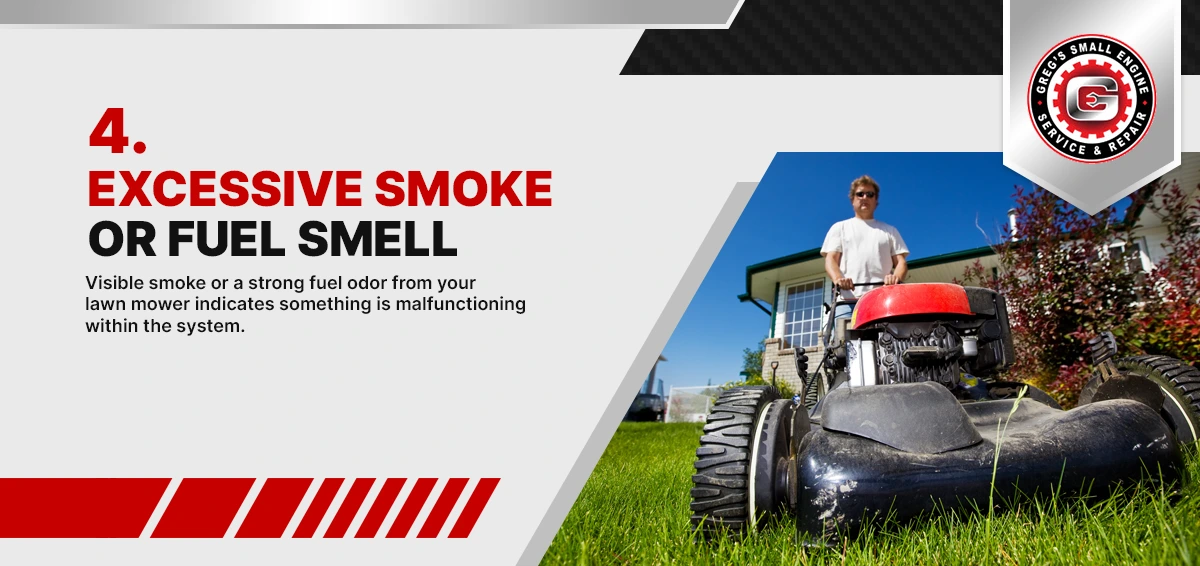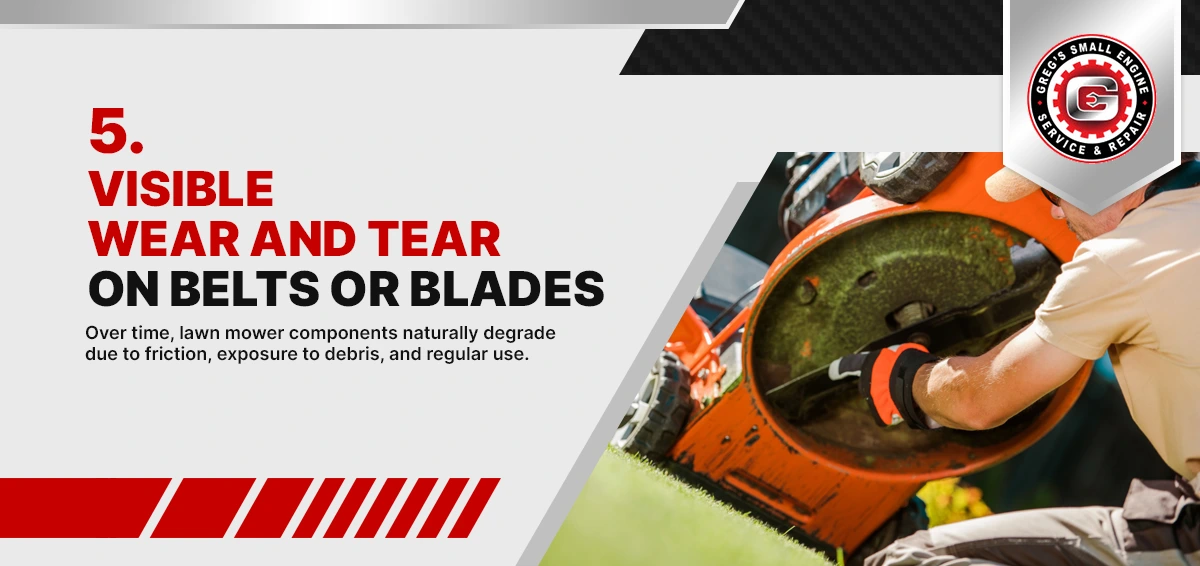Recognizing the early signs that a lawn mower needs repair in Reno, NV, can prevent costly breakdowns and extend the life of your equipment. Whether you rely on your mower for residential upkeep or commercial landscaping, paying attention to performance issues is essential.
Mechanical failures often start with minor symptoms that, if ignored, can lead to significant damage or complete equipment failure. Addressing problems early ensures your lawn mower remains efficient, safe, and ready for seasonal demands. In this article, we’ll outline five common signs that indicate it’s time to seek professional lawn mower repair from trusted experts in the Reno area.
1. Unusual Noises or Vibrations? Consult Lawn Mower Repair Experts in Reno, NV
Unexpected sounds or vibrations during lawn mower operation are warning signs of internal mechanical problems. Ignoring them can reduce efficiency, cause equipment failure, or result in costly repairs. It is essential to address these issues promptly with the help of trained professionals.
Blade or Deck Imbalance
A common vibration source is an imbalance in the cutting blade or mower deck. This can occur from blade damage, improper installation, or debris buildup underneath.
Here are typical causes to look out for:
- Bent blade: A blade damaged by rocks or hard surfaces can disrupt balance and cause vibration.
- Debris under the deck: Grass clippings or dirt buildup can create uneven weight distribution.
- Loose blade bolts: Unsecured blades can shift during operation, resulting in irregular movement.
- Warped mower deck: Damage to the deck may misalign the blade, leading to vibration.
The mower should be inspected and corrected immediately if any of these issues are present. Continued use in this condition may damage other components, such as bearings or engine mounts.
Internal Engine Problems
Unusual noises can also originate from internal engine components. These sounds are often more serious and require prompt, professional evaluation.
Possible internal causes include:
- Worn bearings: Bearings in the crankshaft or wheels may produce grinding or rumbling sounds.
- Loose internal parts: Rattling may indicate fasteners or parts have come undone inside the engine.
- Damaged spark plug: Faulty plugs can cause misfires and abnormal engine operation.
- Valve issues: Clicking or tapping can be related to valve train wear or misadjustment.
These conditions affect engine performance and may lead to a complete failure if not repaired in time. Seeking help from lawn mower repair experts in Reno, NV, ensures accurate diagnosis and safe resolution.
2. Starting Issues: Common Lawn Mower Problems and Fixes
Difficulty starting a lawn mower is one of the most frequently reported service concerns. Whether the engine turns over slowly, starts and then stalls, or fails to start altogether, these issues typically point to underlying mechanical or electrical faults. Addressing them promptly helps maintain equipment reliability and ensures consistent performance throughout the mowing season.
Fuel System Complications
Many starting issues stem from problems within the fuel system. Over time, fuel can degrade or leave behind residue that obstructs normal engine function.
Here are several common causes to examine:
- Old or contaminated fuel: Gasoline stored too long can clog the carburetor or fuel lines.
- Clogged fuel filter: A dirty filter restricts fuel flow, making it difficult for the engine to start.
- Blocked carburetor jets: Residue in the carburetor prevents proper air-fuel mixture.
- Improper fuel type: Using incorrect fuel can damage engine components or cause combustion problems.
Draining old fuel and cleaning or replacing affected components can restore proper function. Regular fuel system maintenance is essential to avoid these recurring problems.
Ignition System Failures
If the fuel system is clean and functional, the next step is to examine the ignition system. A weak or absent spark will prevent the engine from starting.
Key issues to check include:
- Faulty spark plug: Worn or carbon-fouled cannot deliver adequate ignition.
- Loose spark plug wire: A disconnected or damaged wire can disrupt electrical flow.
- Defective ignition coil: A failing coil will not produce the voltage necessary to fire the plug.
- Moisture in electrical components: Water exposure can short-circuit ignition parts.
Replacing worn or damaged ignition components can resolve these issues and restore consistent startup.
3. Inconsistent Cutting Patterns: When to Service Your Lawn Mower
A lawn mower that leaves behind uneven, scalped, or missed patches is a sign of mechanical imbalance or wear. These irregularities not only affect the appearance of your lawn but can also point to issues that, if ignored, may worsen over time. Knowing when to service your lawn mower is key to preserving turf health and machine performance.
Blade Damage or Dullness
Blade-related wear or damage is one of the most common reasons for inconsistent cutting patterns. Over time, blades lose their sharpness or become bent due to contact with hard objects.
Below are some specific causes to consider:
- Dull blades: A blade that has not been sharpened in multiple uses will tear rather than cleanly cut grass.
- Bent blade edges: Striking rocks or tree roots can bend the cutting edge, producing uneven results.
- Unbalanced blade rotation: Uneven sharpening or damage can cause the blade to rotate off-center.
- Improper blade installation: Incorrect placement can interfere with cutting height and efficiency.
Regular blade sharpening and replacement as needed can resolve most of these issues and ensure uniform cutting across your lawn.
Deck Alignment and Height Adjustment
The mower deck is vital in delivering a level and consistent cut. A misaligned or poorly adjusted deck may cause some areas to be cut lower or left uncut entirely.
Check for the following deck-related concerns:
- Uneven deck height: A deck not level side-to-side or front-to-back results in uneven grass lengths.
- Loose mounting brackets: Worn or loose connections allow the deck to shift during mowing.
- Improper height settings: Setting the deck too high or low for your grass type can cause scalping or missed patches.
- Damaged wheels or supports: Uneven deck support can tilt the mower and affect cut quality.
Routine deck inspections and professional calibration help ensure consistent mowing results and prevent lawn damage.
4. Excessive Smoke or Fuel Smell
Visible smoke or a strong fuel odor from your lawn mower indicates something is malfunctioning within the system. These signs should never be overlooked, as they may point to engine trouble, fuel leakage, or improper operation. Identifying the source early on can help prevent long-term damage and ensure safe use of the equipment.
Smoke Emissions from the Engine
When a lawn mower emits smoke—especially blue or white—it signals oil-related issues. These can originate from several sources, including leaks, overfilling, or internal engine damage.
Below are common causes of engine smoke:
- Oil overfill: Adding too much oil can cause it to burn off during operation.
- Oil leaks: Seals and deteriorated gaskets may let oil seep into the combustion chamber.
- Worn piston rings: These allow oil to pass into the cylinder and burn with fuel.
- Tipped mower: Tilting the mower incorrectly during transport or maintenance may lead to oil leakage.
Each of these conditions should be assessed promptly. Persistent smoke signals internal damage and may impact air filter performance and engine longevity.
Strong Fuel Odors During or After Use
Fuel smells are often caused by leaks or incomplete combustion. If you notice gasoline lingering in the air after operating your mower, locating the source and taking corrective action is essential.
Common sources of fuel odor include:
- Leaking fuel line: Cracked or aged fuel lines can allow gasoline to escape.
- Loose fuel cap: A missing or improperly sealed cap can release vapors.
- Flooded carburetor: Too much fuel entering the engine can produce a rich smell.
- Damaged fuel tank: Small cracks or corrosion may let gasoline leak slowly.
These problems are wasteful and pose a safety hazard, particularly during hot weather or storage near flammable materials.
5. Visible Wear and Tear on Belts or Blades
Over time, lawn mower components naturally degrade due to friction, exposure to debris, and regular use. Visible wear and tear on belts or blades indicate that your equipment requires servicing. Ignoring these signs may reduce cutting performance, mechanical strain, or unexpected breakdowns.
Blade Wear and Damage
Lawn mower blades endure heavy impact, especially when mowing over rough terrain or encountering hidden objects. Visual inspection can reveal signs of damage that affect performance and lawn health.
Look for these blade-related issues:
- Nicks and dents: Contact with rocks or branches can chip the cutting edge.
- Rust or corrosion: Exposure to moisture can weaken the blade structure.
- Thin or rounded edges: Excessive sharpening or use may reduce blade thickness.
- Bent blades: Impacts can cause misalignment, leading to uneven cuts.
Replacing blades at the first sign of structural damage ensures consistent results and protects the mower from further stress.
Belt Deterioration and Misalignment
Belts drive essential mower functions such as blade rotation and self-propulsion. Worn or damaged belts can slip, stretch, or snap, interrupting operation.
Check for these belt-related signs:
- Fraying edges: Visible threads indicate aging or stress.
- Cracks or splits: Heat and tension over time can cause cracking.
- Slack or looseness: A stretched belt may not provide proper tension.
- Misaligned pulleys: Belt wear often results from pulley imbalance.
Timely replacement and realignment prevent mechanical failure and extend the mower’s service life. Routine inspection ensures optimal equipment performance.
Conclusion
Catching early warning signs of lawn mower trouble can distinguish between a quick fix and a costly replacement. Whether it’s unusual noises, starting issues, cutting inconsistencies, smoke, or visible wear, recognizing these symptoms and taking prompt action ensures your equipment stays in top condition. With proper care and expert service, your mower can deliver reliable performance season after season.
If you’ve noticed any of these issues, trust the professionals at Greg’s Small Engine Service & Repair to provide the thorough, high-quality care your equipment deserves. Visit our contact page or call 775-790-0435 to schedule a service appointment today.

